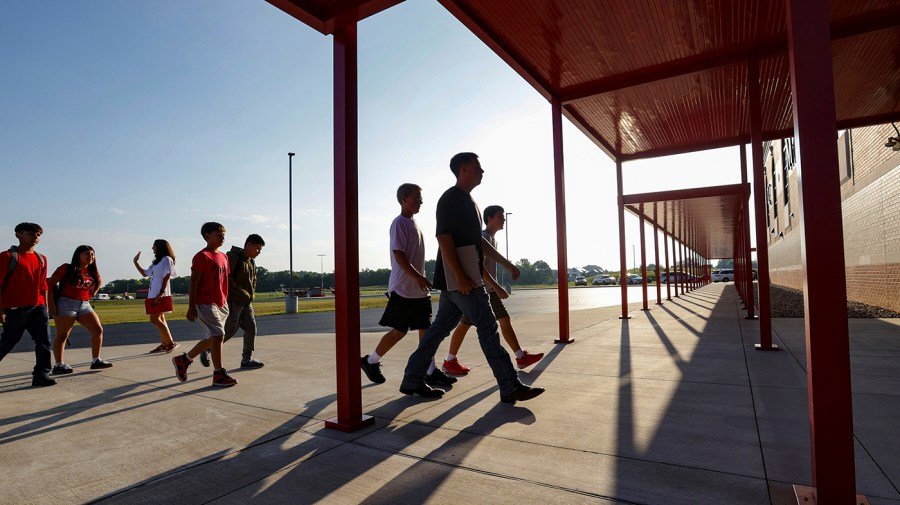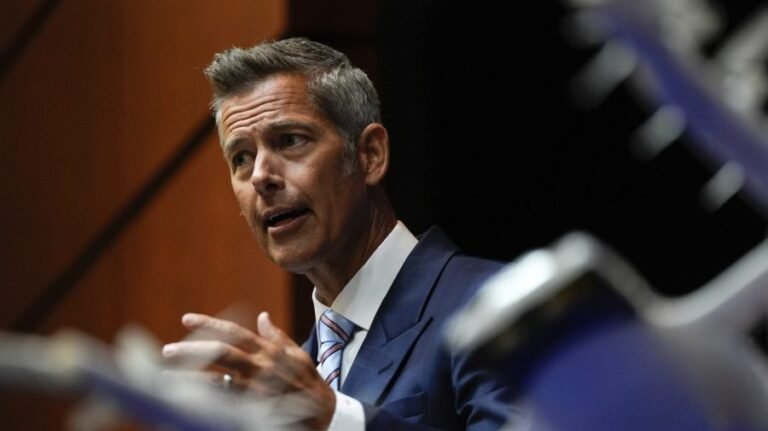
K-12 enrollment is on the decline between a combination of dropping birth rates and more school choice options putting schools in a tight bind.
The public school system is expected to see a drop of millions of students over the next five years, a hit that will affect schools financially and potentially lead to the closure of more districts. Ways to combat this phenomenon are limited as experts say schools will have to look at scaling down operations or competing with other educational institutions.
From fall 2019 to fall 2023, a 2.5 percent drop in enrollment occurred, taking over a million kids out of the K-12 system. The National Center for Education Statistics (NCES) projects enrollment will go from 51 million in 2019 to 47 million by 2031.
The main contributors to this decline are largely out of a school district’s control such as declining birth rates and migrations out of certain states.
“We believe the primary contributing factor is likely the U.S. birth rate is just at historic lows right now, which means that less students are even being born to be funneled into the public school system and we definitely see that with kindergarten and first grade having pretty significant drops in the past couple of years,” Tara Moon, a policy analyst at Future Ed, said.
The National Center for Health Statistics found the fertility rate in the U.S. has dropped 2 percent annually from 2014 to 2020. In 2022, a historic low occurred when the birth rate fell by 3 percent.
Another problem for some districts is families moving from California and New York to places like Florida.
“Additionally, we see a lot of in states like New York and California, families are leaving major urban centers that are more expensive for more affordable areas outside the city,” Moon said. “And, in the past, immigration has been able to offset these declining birth rates, but estimates are saying right now that it won’t be enough to sustain the decline in enrollment.”
But other factors can be in a school’s control such as students leaving the public school system for other school choice options.
Since COVID-19, the interest in homeschooling and private school options has exploded, especially as states pass legislation making it easier for individuals to go to other schools and taking some money from public school systems to do it.
Data from the John Hopkins Institute for Education Policy’s Homeschool Research Lab found that 90 percent of states that track homeschooling enrollment found it increased in the 2022-2023 school year, despite assumptions it would go down after the height of the pandemic.
“It’s really important to look at the role that private school choice programs are playing in this picture,” said Carrie Hahnel, a senior associate partner at Bellwether. “There has been a significant increase in education savings accounts across the country,”
“Bellwether estimates that about 40 percent of the K-12 population now has access to some kind of ESA or voucher and those kinds of programs have the potential, not only to pull students from traditional public schools into private options, but also the potential to further affect overall public education budgets,” she added.
Enrollment declines rarely mean anything good for school districts. which rely on good enrollment numbers for funding. One of the consequences for the decline has been school closures, with Reason Foundation finding data from 15 states showing 98 school closures in the 2023-2024 school year.
Other ways schools have tried to save money is cutting classes and positions.
“So essentially, per pupil, when we think about declining enrollment, and what that really translates to is that it really translates to fewer resources, less support and opportunity for kids,” said Lin Johnson, chief strategy, growth and finance officer TNTP, a group focused on improving the public education system.
“So, as those numbers drop, funding drops, it means fewer teachers, bigger class size,” Johnson continued. “It means [a] cut in terms of supports that we care about, like arts, extra curriculum sports as well, that our young people truly do thrive on.”
While some schools may have to downsize, experts say that does not always need to be a bad thing. The problem can be state requirements in trying to create a school that works for a small number of students.
“Oftentimes, the state will tell districts and schools exactly how to spend their money, that you need to have one person doing this and a half a person doing that,” said Matthew Joseph, senior policy advisor for education funding at ExcelinEd. “And when you have 10 percent fewer students and you only need 75 percent of the chemistry classes, but you’re being told you have to hire the same number of people, and that that’s the challenge.”
“Another example is that they need one less teacher,” Joseph continued. “If the state tells them, well, now you have to, instead of looking for the teacher you don’t need, or the teacher who’s not providing best service, you have to fire the people that you first, most recently hired, who are the most junior teachers,”
He added, “So, instead of maybe getting rid of one person who’s a higher salary person, you may have to get rid of three people, and so that means the school has three fewer staff members instead of one.”





